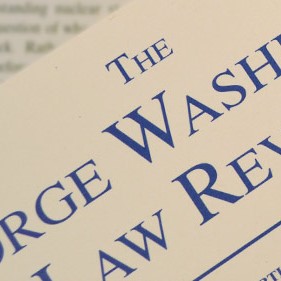Edward Sherman · May 2014
82 GEO. WASH. L. REV. 834 (2014)
American courts have wrestled with the issue of standing in lawsuits where there is a question as to whether the plaintiff has an “injury in fact.” The issue has developed differently depending on the context. The issue arose in mass tort suits where persons exposed to a toxic substance did not have any present adverse physical condition. These cases were variously labeled “expo- sure-only,” “latent manifestation,” or, in the class action context, “future claimants” suits. In such suits, state substantive laws vary markedly as to whether there is a cause of action and right to recover damages for fear of future injury. Federal Employers Liability Act cases limit recovery for “fear of cancer” to those cases in which there is evidence of a present condition making cancer more likely.
In order to avoid more onerous substantive law standards in tort cases, including class action requirements, plaintiffs in product liability cases gravitated from tort to contract causes of action. Theories based on the “benefit-of- the-bargain” and “economic harm” have sometimes succeeded in overcoming the “no injury” claim when there is proof of actual economic harm. The Fifth Circuit’s decision in Cole v. General Motors, distinguishing its prior decision in Rivera v. Wyeth-Ayers Laboratories, reflects a willingness to find economic harm to be an adequate claim of injury. Two recent cases, In re Cheer- ios Marketing & Sales Practices Litigation and Lopez v. Southwest Airlines Co., indicate the unsettled parameters of that test and are discussed in the con- text of developing standing law.
Statutory penalty and rights cases present special circumstances for stand- ing requirements depending on the intent of the statute. The Supreme Court has recently declined to decide, in First American Financial Corp. v. Edwards, whether a company could be sued for violating certain statutes even if the plaintiff suffered no direct harm from the violation. The full scope of statutory fixed penalty and damages suits where there would be no injury without the statute is still to be fleshed out.
Invasion of privacy suits have mushroomed with the cyberspace revolution, leaving many still-unanswered questions as to what degree of actual harm is required to establish standing. Finally, a spate of false labeling and advertising claims suits have been filed under state consumer statutes, many relating to food, with differing results in the courts relating to the question of actual injury.

